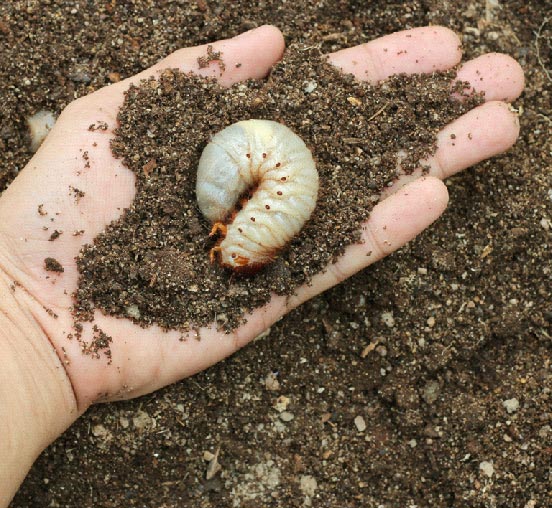Diagnosing Lawn and Plant Diseases: Brown Patch and Gray Leaf Spot
Lawns aren’t just beautiful, they have a lot of practical benefits, including cleaning the air around your property and boosting your home’s curb appeal.
But only if it’s healthy.
Unfortunately, your lawn can develop a number of diseases, which can turn your yard dead and brown. Grey leaf spot is one of those diseases.
We’ve put together this guide to help you recognize grey leaf spot and learn how to get rid of it.
So let’s dive in!
Understanding Grey Leaf Spot
Summer is right around the corner, which means it’s time to keep an eye out for that pesky lawn disease: grey leaf spot.
This disease can spread over your entire lawn, making your grass thin, brown, and scraggly. But if you don’t know what you’re looking for, it can be hard to recognize.
Here are a few of the signs and symptoms you need to be aware of this year.
Recognizing Signs and Symptoms
The first sign of grey leaf spot is small, brownish/grey spots that appear on individual blades of grass. Over time, these spots will get bigger and become somewhat diamond shaped.
If left untreated, grey leaf spot can cause lesions to form on the stems and spikes of your grass. This will cause the grass to start withering, and if you still do nothing to reverse the disease, your grass will die.
It’s not uncommon for grey leaf spot to create large patches of yellow grass throughout an otherwise healthy lawn.
And here’s why.
What Causes It?
Grey leaf spot is a fungal disease that develops during the warm summer months.
The major culprit of grey leaf spot is moisture. If your lawn doesn’t have a chance to completely dry out after you water it, the hot weather and damp can cause the grey leaf spot fungus to develop.
Because of this, the parts of your lawn that are particularly vulnerable to this disease are areas that don’t get a lot of sun. It’s harder for these sections to dry after you water them, which creates a damp breeding ground for grey leaf spot.
How to Get Rid of It
Once grey leaf spot has already attacked your lawn, the best way to get rid of it is with a systemic fungicide treatment.
This type of fungicide comes in a granular form that is applied with a spreader. After spreading the treatment over the lawn, the grass is given about a quarter on an inch of water.
This treatment should last about two to three weeks. After that, you’ll need to repeat the process over again.
Even if you don’t notice any signs of grey leaf spot yet, you can give your lawn this treatment. This will prevent the disease from developing in the first place and protect your grass.
How to Prevent Grey Leaf Spot from Ruining Your Lawn
Although fungicide treatment is almost always the best option to keep grey leaf spot from killing your lawn, there are a few other simple steps you can take to prevent the disease from forming and spreading.
1. Water at the Right Time
Since moisture is what causes the grey leaf spot fungal growth, you have to be careful about when you water your lawn.
If you water when you get home from work in the afternoon, you’re setting yourself up for tough battle with grey leaf spot. Your lawn won’t have enough time to dry out completely before the sun sets. Because of this, the moisture will cling to the grass all night and promote fungal growth.
Instead, water your grass in the morning. Do it before you eat breakfast or head to work.
This will give the grass plenty of time to dry out before night, even in places that get a lot of shade.
2. Don’t Water Too Much!
You might think your grass needs more water in the hot, summer months. But this isn’t always true. Giving your lawn too much water can make it impossible for the grass to ever dry completely.
Only water your lawn after it dries out. And don’t turn on the sprinklers every day.
It’s a good idea to wait four to five days between waterings. When you do water your lawn, only give it enough water so it reaches a depth of 4 to 6 inches.
This doesn’t mean you should give your grass 4 to 6 inches of water. Instead, you want the water to seep 4 to 6 inches into the dirt. Depending on the drainage in your yard, the exact amount of water can be different for each lawn.
3. Ensure Good Drainage
If your yard doesn’t have good drainage, you should spend some time fixing that problem.
One of the reasons you might not have good drainage is if your soil is tough and compacted. The water will have a hard time absorbing into the dirt, which means it will sit on the surface and keep your entire lawn damp.
You can prevent your soil from compacting by maintaining a good Ph level. It also might be a good idea to aerate your lawn once a year.
4. Keep the Lawn Mowed
Keeping your lawn mowed can keep grey leaf spot from spreading to healthy grass.
Get into the habit of mowing your lawn every week or two. When you mow the grass, chop it down to about 3 inches.
You should also clean up any extra thatch that gathers on your lawn when you mow it. This thatch can trap moisture inside the lawn, which can cause grey leaf spot to grow despite your efforts.
Diagnosing Grey Leaf Spot in Your Lawn
Grey leaf spot can wreak havoc on your lawn if you don’t take preventative measures. Summer is just getting started, so now’s the time to ease up on the water and keep the grass short.
If you notice any signs of grey leaf spot, start fungicide treatments right away.
Do you need help getting rid of this lawn disease?
Make sure you click here to learn how we can help you!


